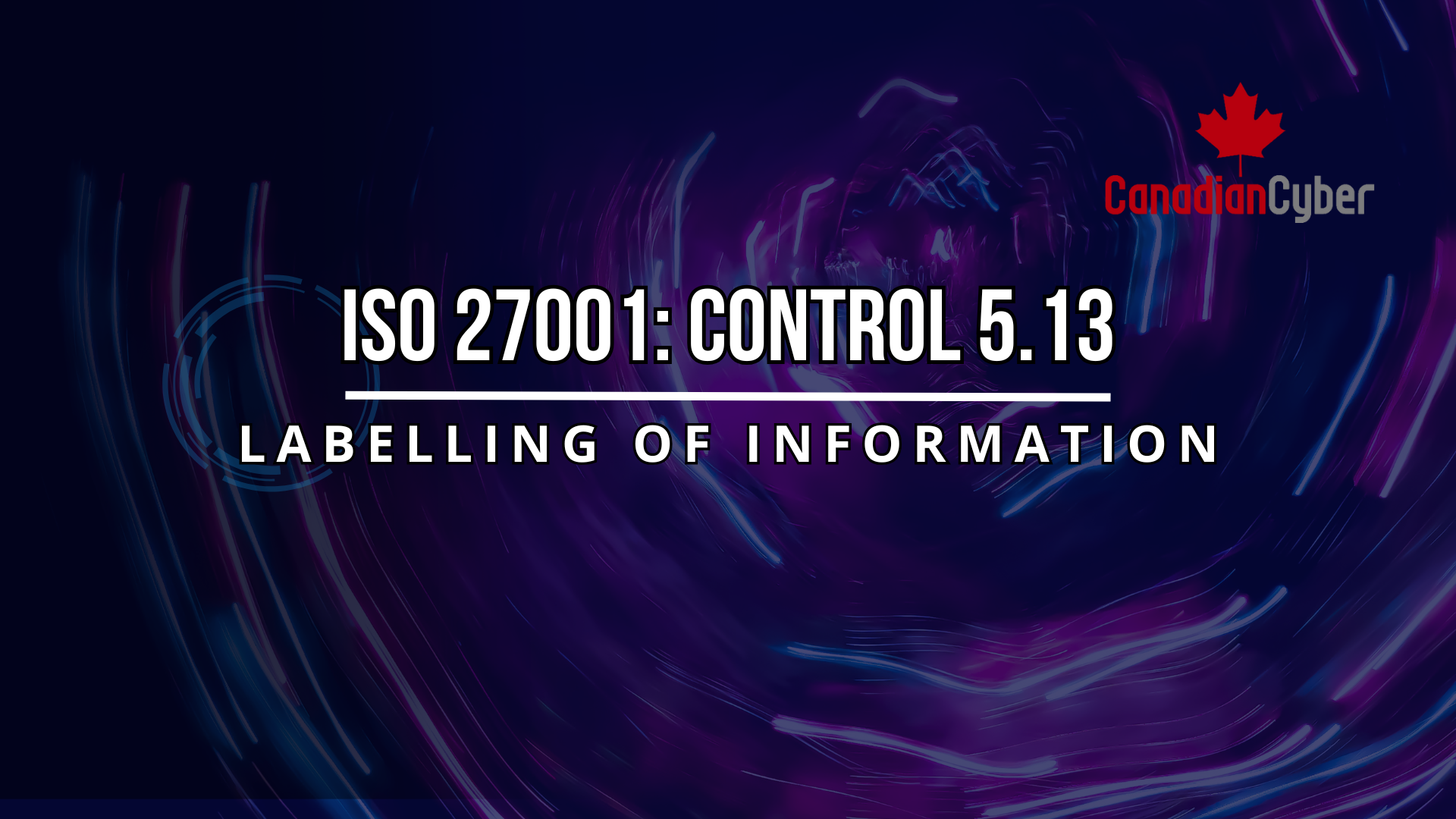
Abdul Samad Saleem

September 10, 2025
ISO 27001 Control 5.13 requires labelling classified information so employees know how to handle it. Clear labels reduce risks, prevent mistakes, and support compliance.
Introduction
Classification without labelling is like having a secret code… that nobody can read.
You might know a document is confidential in theory, but if it isn’t clearly labeled, employees might email it to the wrong person, upload it to a public folder, or store it on an unsecured drive.
ISO 27001 Control 5.13 ensures that classification is visible and understandable so that everyone handling the information knows exactly how to protect it.
Summary of Control 5.13: Labelling of Information
🔒 Control Title: Labelling of Information
📘 Source: ISO/IEC 27002:2022, Section 5.13
🧩 Control Category: Organizational
🔍 Attributes:
- Control Type: #Preventive
- Security Properties: #Confidentiality, #Integrity, #Availability
- Cybersecurity Concepts: #Protect
- Operational Capabilities: #Information_Management, #Policy_Enforcement
- Security Domain: #Protection_and_Defense
Control Objective
To ensure that classified information is clearly and consistently labelled so that its sensitivity is understood, and it is handled appropriately throughout its lifecycle.
Implementation Guidance
1) Define Labelling Standards:
- Align with your classification scheme (Control 5.12)
- Use consistent terms like Public, Internal, Confidential, Highly Confidential
2) Apply Labels in All Formats:
- Physical: Stamps, headers/footers, colored covers, watermarks
- Digital: Metadata tags, file naming conventions, embedded document headers
3) Automate Where Possible:
- Use document management systems or Data Loss Prevention (DLP) tools to apply and enforce labels automatically
4) Ensure Labels Are Visible but Discreet:
- Labels should be clear enough for handlers but not attract unnecessary attention from unauthorized viewers
5) Review and Update Labels:
- If an asset’s classification changes (e.g., after public disclosure), update the label accordingly
Why This Control Matters
Without labelling:
- Employees might mishandle sensitive data without realizing it
- Compliance requirements for marking sensitive documents could be missed
- Data could be accidentally shared or stored in insecure environments
With labelling:
- Classification is immediately visible
- Users know at a glance how to handle the asset
- It’s easier to train staff and enforce policies
Common Pitfalls to Avoid
- Inconsistent labelling across teams or systems
- Overlabelling everything as “Confidential,” which reduces trust in the system
- Relying entirely on manual labelling without technological support
- Not labelling digital assets like cloud files and emails
Canadian Cyber’s Take
At Canadian Cyber, we help organizations bridge the gap between classification and real-world protection with practical labelling systems.
From metadata tagging to physical document stamping, we ensure your labels are consistent, compliant, and easy to follow.
Ready to Make Your Classification System Work in Practice?
We can help you implement ISO 27001-compliant labelling methods that make security visible and intuitive.
👉 Click here to start your labelling journey.
